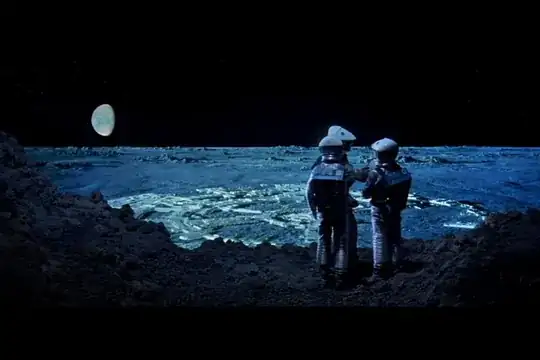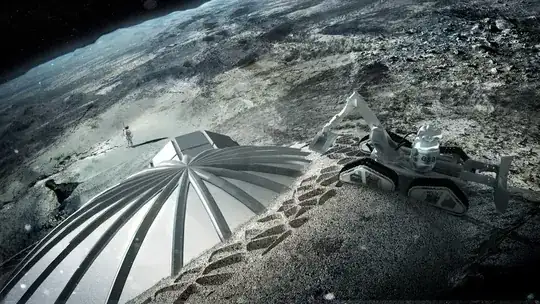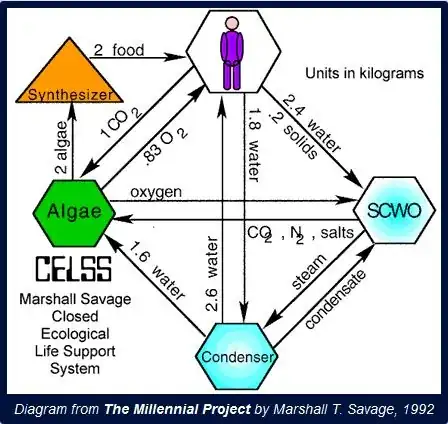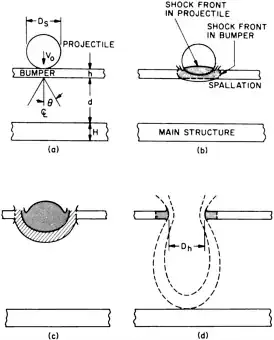This is more of an issue of motivation and water than it is of technology.
This could be done, if there was a reason to do it. However, lunar water would be a huge plus which would make a great difference to the project. Water would be used for many things.
PROPELLANT
The dV to lift a payload into low Earth orbit is 9.3-10km/s. Assuming an exhaust velocity of 4.4km/s (typical for H2-O2 engines in a vacuum, rather high for a first stage but we'll stick with it for consistency) the initial mass / payload ratio from the rocket equation is
e^(10/4.4)=9.7:1
That is, a 970 tonne rocket (including hydrogen/oxygen propellant) can lift 100 tonnes into orbit. Note that "payload" here is used in the loosest possible terms, as it includes all the mass of the rocket tanks and engine, in additional to the useful payload (though infinite staging would reduce this to zero.)
A real rocket necesarily underperforms this. Taking Falcon Heavy (2 1/2 stage rocket using kerosene/oxygen) as a real world example:
Specific impulse 311 sec x 9.8 = 3047m/s exhaust velocity
calculated initial mass / payload ratio e^(10/3.047)=26.6:1
Actual initial mass / payload ratio 1463 tonnes / 53 tonnes =27.6:1
Getting to the moon from low earth orbit further impacts the mass/payload ratio.
For the following dV budgets we would have to apply a further mass / payload ratio, starting at low earth orbit, and assuming 4.4km/s effective exhaust velocity (H2/O2 engine)
Low Earth orbit to:
Lagrange points (where Earth and Lunar gravity are balanced) stopping and not merely flying through
3.43 to 3.97km/s > 2.18:1 to 2.47:1, depending on which point
Low Lunar Orbit 4.04km/s > 2.5:1
Lunar surface 5.93km/s > 3.85:1
It's clear why the Apollo missions left the command module in lunar orbit with the fuel to turn around and go home (a burn of only 1.31km/s) and sent a separate module down to the lunar surface.
Being able to make propellant on the moon would enable a lunar shuttle to meet an Earth supply ship, greatly reducing the amount of propellant required.
We can actually do even better. Apollo required only 3.05 to 3.25km/s (median 3.15, ratio 2.04:1) to achieve translunar injection, which in the case of Apollo meant a free-return figure 8 orbit round the back of the moon that would return to Earth without power if there was a failure (a trajectory decision that saved the lives of the crew of Apollo 13.) the lunar shuttle would have to chase after the supply ship, retrieve the payload and decelerate back to the moon surface.
In summary a vehicle to launch a given payload to the moon would be 3.85 times as heavy as a vehicle to launch the same payload to low earth orbit and would not return. With a lunar shuttle available that can be refueled on the moon and catch up to the earth vehicle, it would only need to be 2.04 times as heavy and would return to Earth on a free return trajectory.
Unfortunately, refining vast quantities of propellant on the lunar surface would require vast quantities of energy. Water ice deposits are most likely to exist in craters at the poles, and therefore have little access to solar energy. This would probably mean bringing a small nuclear reactor, similar to the ones used on submarines, to the moon to provide for the power needs.
CONSTRUCTION, COMFORT AND EXPERIMENTATION
So I've just shown that the International Space Station could be moved to the moon, if we could accept a 2-4 times increase in Earth launch weights, plus the costs and risks associated with more complicated missions. It's doable, but is it worth it?
To go to the moon, you really have to ask if there is anything that can be done there that can't be done on the international space station.
I don't see construction as a major issue. A decent survey would reveal caves and old lava tubes suitable for habitation, with stable temperatures. An inflatable habitat protected by such a natural shelter would be ideal. However we are going to want to build some kind of structure sooner or later. Water would be useful in mixing whatever form of concrete was suitable on the moon (it would most certainly be different to regular Earth concrete, which requires CO2 to cure.)
Water is a major factor in human comfort and experimentation. It can be used for recreation and bathing, as a working or heat transfer fluid in machinery and for chemistry. I don't see any practical need for it for growng of food (food can be brought from Earth if necessary) but surely a major reason for setting up a moon base would be to experiment with growing crops in an isolated system in low gravity.
Finally, I din't thnk we'll be looking to mine the moon just yet, if ever. The cost of transport is just too great.
In summary, I think the most pressing thing would be to undertake a (robot) survey of the moon, in particular of its water resources, and then try to develop existing technology around it.



